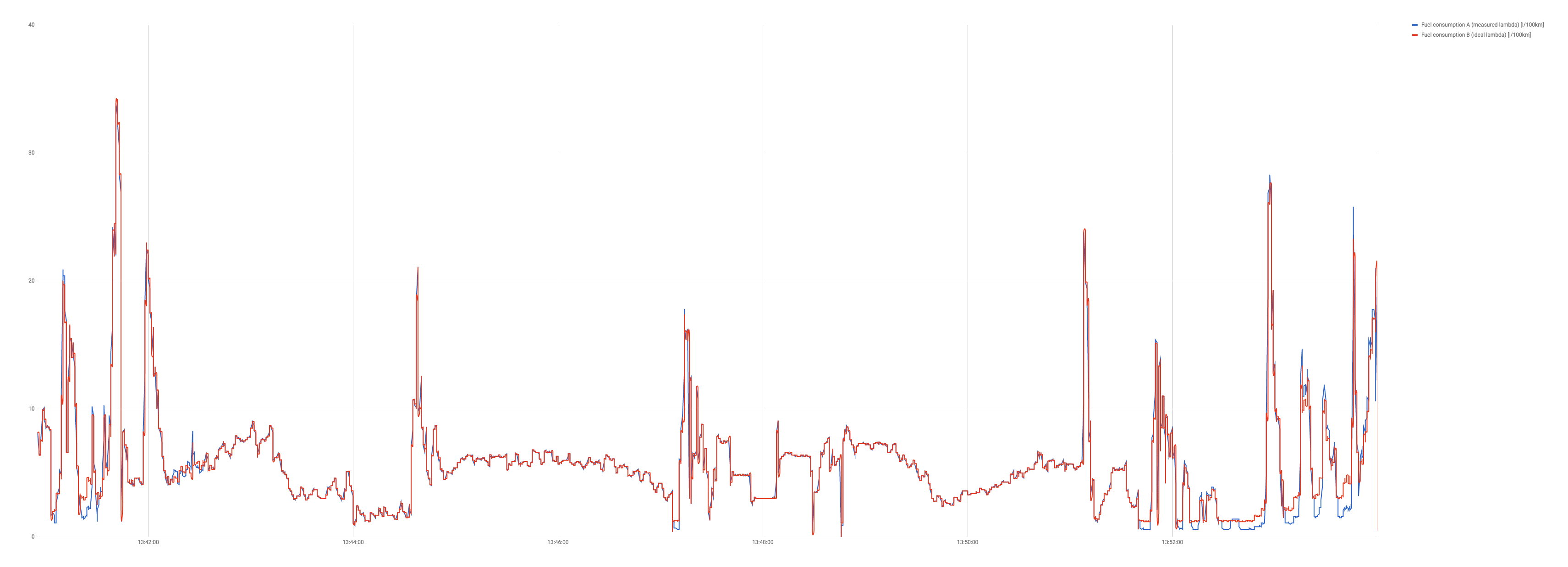The engine fuel rate parameter ($5E) is supported only by rather new OBD2 compliant cars. The engine gives real-time data on how it’s consuming fuel with this parameter. But don’t worry even if your car doesn’t support it.
OBD Auto Doctor provides the calculated fuel consumption for almost every car. The software calculates the estimated fuel consumption based on several other parameters. The formula is a bit different depending on what parameters your car supports and what fuel it uses.
What is lambda?
In car diagnostics domain, air-fuel equivalence ratio is often regarded as lambda (λ). This is especially true in spoken language. Air-fuel equivalence ratio is the ratio of actual air-fuel ratio (AFR) to stoichiometry for a given mixture. In other words, lambda is the ratio between the amount of oxygen actually present in a combustion chamber versus the amount that should have been present to get perfect combustion.
In an ideal mixture, there’s exactly the amount of oxygen required to burn the amount of fuel present. Thus, lambda = 1.0.
In a lean mixture, there’s too much oxygen for the amount of fuel. Thus, lambda > 1.0.
In a rich mixture, there’s too little oxygen for the amount of fuel. Thus, lambda will be < 1.0.
In practice, the AFR devices measure the amount of residual oxygen or unburnt hydrocarbons in the exhaust gas. The engine monitors the lambda values in a feedback loop to adjust the air-fuel mixture.
OBD Auto Doctor uses the lambda values for the fuel consumption calculations. This is to get the most accurate estimation of fuel consumed.
Sources, and more information available at Air-fuel ratio on Wikipedia and Lambda as a Diagnostic Tool.
Lambda in practice
We did an experiment to find out how the lambda values affect the calculated fuel consumption in practice. In a data set A, we fetched the real lambda values from the car, and used those in the calculations. In a data set B, we assumed that the mixture was ideal all the time. In this case, the value of 1.0 was used as the lambda value.
We drove a sample track and measured both data sets during the same drive. Below is a graph containing the results. Click the image for larger view.

Fuel consumption chart from the csv data. Click for large image.
As you can see from the image, the ideal vs measured lambda doesn’t have too much impact in fuel consumption calculations. When driving at a constant speed, the difference is barely noticeable. During and after acceleration and deceleration, you can observe the change easier.
With this experiment, the average consumption with the ideal lambda was 5.69 [l/100km] while with the measured lambda it was 5.64 [l/100km]. So on average, the calculations are accurate even without the measured lambda value. However, with other engines and car models, the change can be different. This data was collected from 2.0 liter TFSI gasoline engine.
Try it for free
Try OBD Auto Doctor for free. Download the software and start communicating with your car!